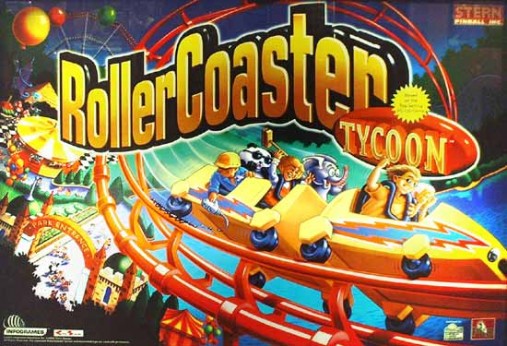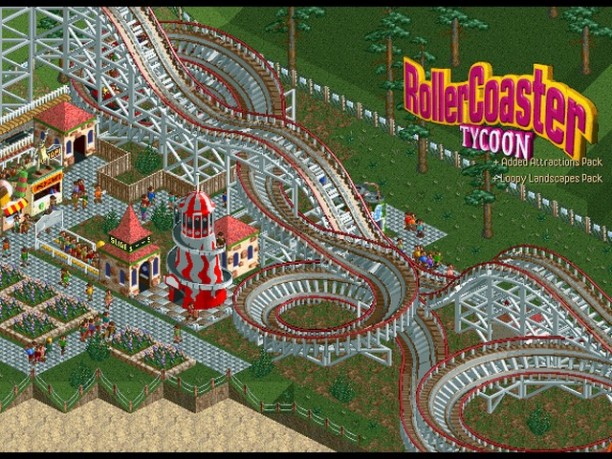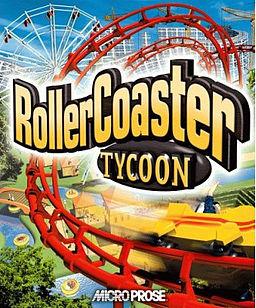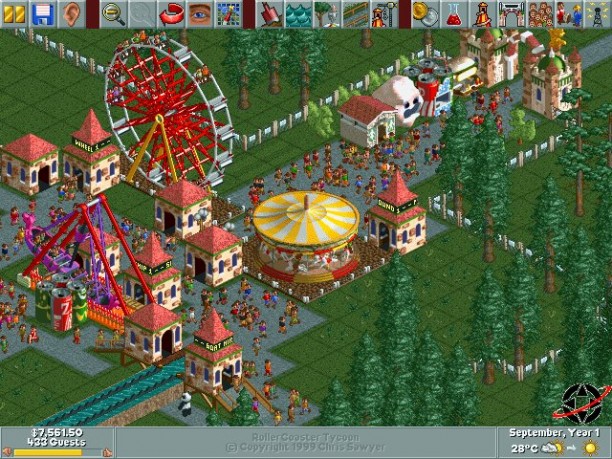
Roller Coaster Tycoon
If the last two weeks of the 1MorePodcastle haven’t given it away, I really am a sucker for simulation/management games. There’s just something about the challenge of managing virtual societies that continually draws me in. And with that, I think it’s time we look back on the 1999 mega-hit, Roller Coaster Tycoon.
 Though Chris Sawyer initially set out to create a sequel to his 1994 game Transport Tycoon, he had a change of heart mid-development (based on a growing fondness for roller coasters), and began to develop a game called White Knuckles. However, as the release date of the game approached, Sawyer, and publishing partner Hasbro, decided that the Tycoon connection was too good an opportunity to pass up, which lead to the Roller Coaster Tycoon renaming we see today.
Though Chris Sawyer initially set out to create a sequel to his 1994 game Transport Tycoon, he had a change of heart mid-development (based on a growing fondness for roller coasters), and began to develop a game called White Knuckles. However, as the release date of the game approached, Sawyer, and publishing partner Hasbro, decided that the Tycoon connection was too good an opportunity to pass up, which lead to the Roller Coaster Tycoon renaming we see today.
 In the game itself, you are tasked with completing various scenarios in different theme parks. Each theme park is different thematically (desert, forest, etc.) but you are usually aiming towards having a certain number of guests within a time limit, or raising the overall value of the park to a certain level. These tasks are completed by building various rides (roller coasters, water slides, ferris wheels, etc.) and keeping your guests happy (hiring cleaners for the pathways, having enough washrooms, etc.). On top of this you can hire gardeners to cut the grass, security guards to stop vandalism, and mechanics to fix/maintain the rides. You are also able to launch advertising campaigns to attract people to the park, offer discounts on admission, etc.
In the game itself, you are tasked with completing various scenarios in different theme parks. Each theme park is different thematically (desert, forest, etc.) but you are usually aiming towards having a certain number of guests within a time limit, or raising the overall value of the park to a certain level. These tasks are completed by building various rides (roller coasters, water slides, ferris wheels, etc.) and keeping your guests happy (hiring cleaners for the pathways, having enough washrooms, etc.). On top of this you can hire gardeners to cut the grass, security guards to stop vandalism, and mechanics to fix/maintain the rides. You are also able to launch advertising campaigns to attract people to the park, offer discounts on admission, etc.
The guests themselves are also a critical factor to keep in mind when playing the game. With each individual guest, you are able to see specific information about their being if you click on them. As an example, each guest has specific tastes which are rated by a number guide. While “Guest 384” may be satisfied that there are enough rides with an intensity rating of six, “Guest 312” may find these rides too intense, and may disappointed that there isn’t a variety of gentle rides for them to ride. By paying attention to your guests, you can see what needs to be built to increase the variety, and ultimate success, of your park.

Completely programmed by Chris Sawyer, with occasional outsourcing for graphics and music, the game really is a labour of love, and paid off handsomely for Mr. Sawyer. With the series selling over an estimated 9 million copies, Chris Sawyer has managed to make $39 million in licensing payments alone. Overall, the game is an extremely fun and exciting way to manage a theme park. Nothing like it had quite been done before, and the result was a unique, addicting game which was a smash hit in 1999. If you haven’t had a chance to play the game before, I recommend you go and grab yourself a copy, it’s a game you truly cannot miss.